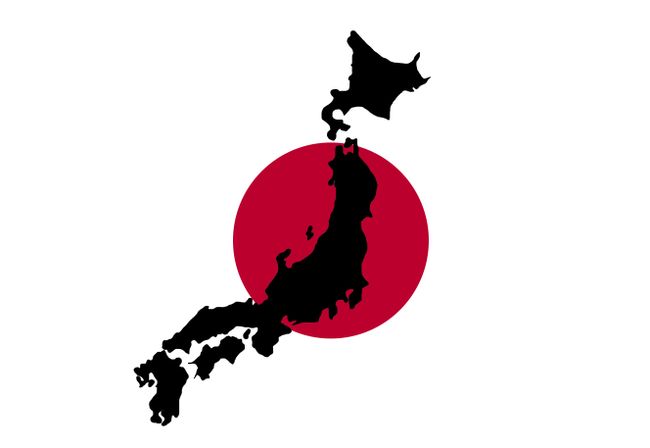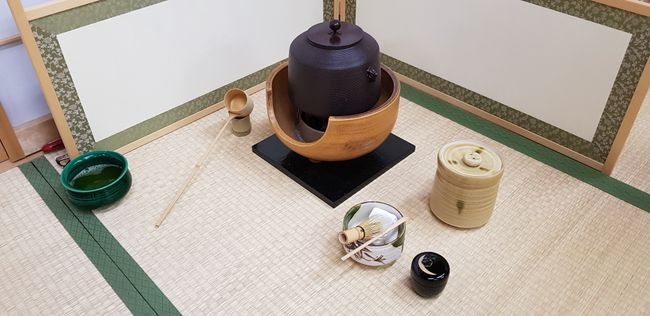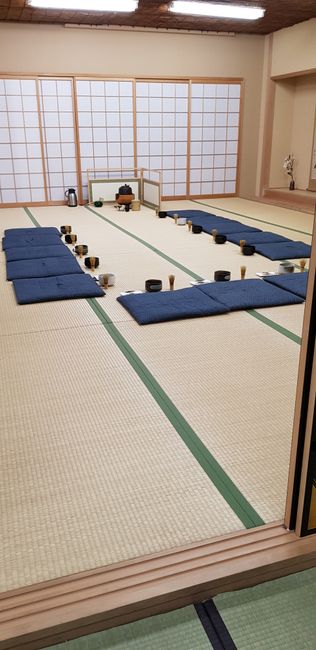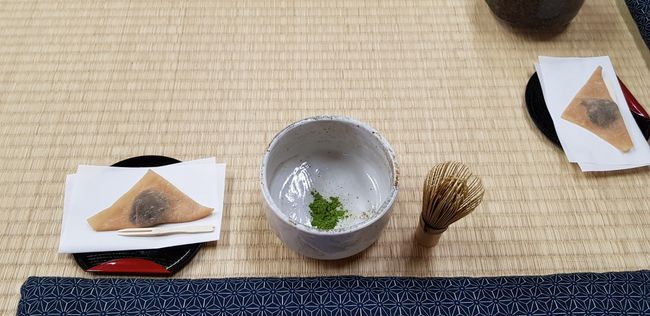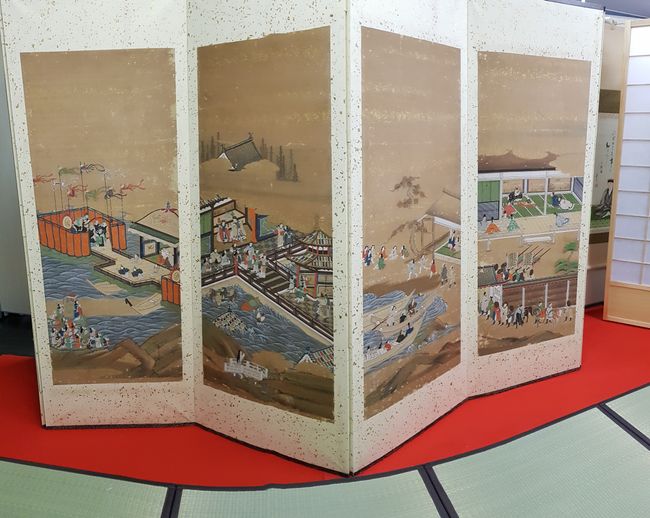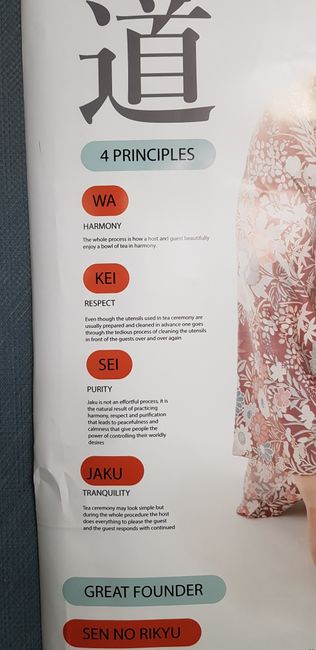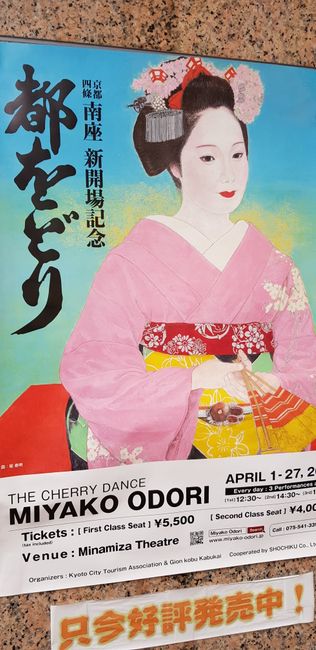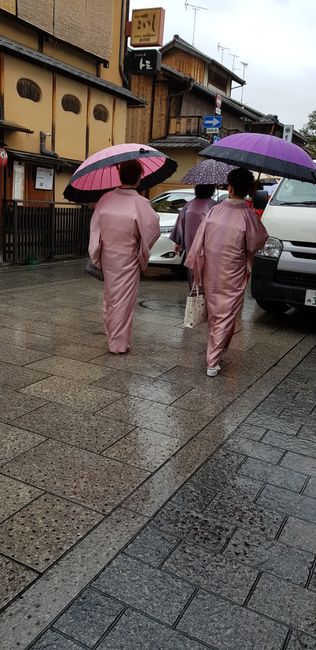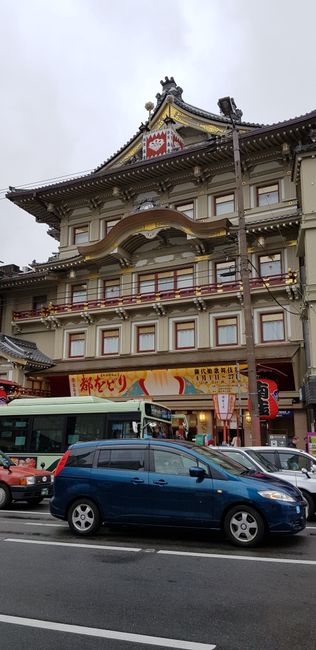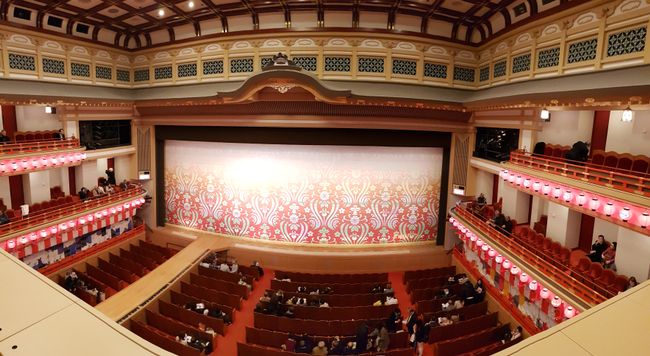क्योटो - चाय समारोह, पारंपरिक रंगमंच और वाबी सबी
प्रकाशित: 15.04.2019
समाचार पत्रिका के लिए सदस्यता लें
On Wednesday, it rained all day for the first time during our trip. Fortunately, we had planned an indoor program for this day.
In the morning, we attended a tea ceremony. However, it is important to note that this was not a traditional tea ceremony, as such ceremonies can last for several hours. Our tea ceremony was a general introduction to the topic, where the individual steps were demonstrated and explained. There are specific and strictly defined rules and steps to follow during a tea ceremony. It was interesting to see how our tea master prepared the matcha tea with dedication. Harmony and respect are important elements of such a ceremony. We both enjoyed the frothy green tea.
In the afternoon, we watched a folklore dance revue. The so-called "Miyako Odori" takes place annually in spring in Kyoto and was first performed in 1872. Photography and filming are strictly prohibited during the performance, so we could not take any photos or videos. However, if you're interested, you can watch it on Youtube. The costumes and stage designs were very colorful and filled with Japanese motifs (tea houses, temples, cherry blossoms, maple trees). We didn't understand the Japanese vocal singing, but we could follow the content of the eight performed pieces based on the program booklet.
Today, it became particularly evident to us that the Japanese celebrate all their arts to perfection. Whether it is the creation and maintenance of garden landscapes, the cultivation of bonsai trees, the artistic treatment of flower arrangements (Ikebana), hours-long tea ceremonies, or poetry and music, Wabi-Sabi is a fundamental principle. Wabi Sabi is a state of mindfulness, of living in the present. But it is also an aesthetic concept, namely finding beauty in simplicity.
Even though we don't understand the language and many customs, the way beautiful traditions are preserved here in Japan with immense dedication, respect, structured processes and rituals, as well as unwavering patience, is impressive.
समाचार पत्रिका के लिए सदस्यता लें
उत्तर

